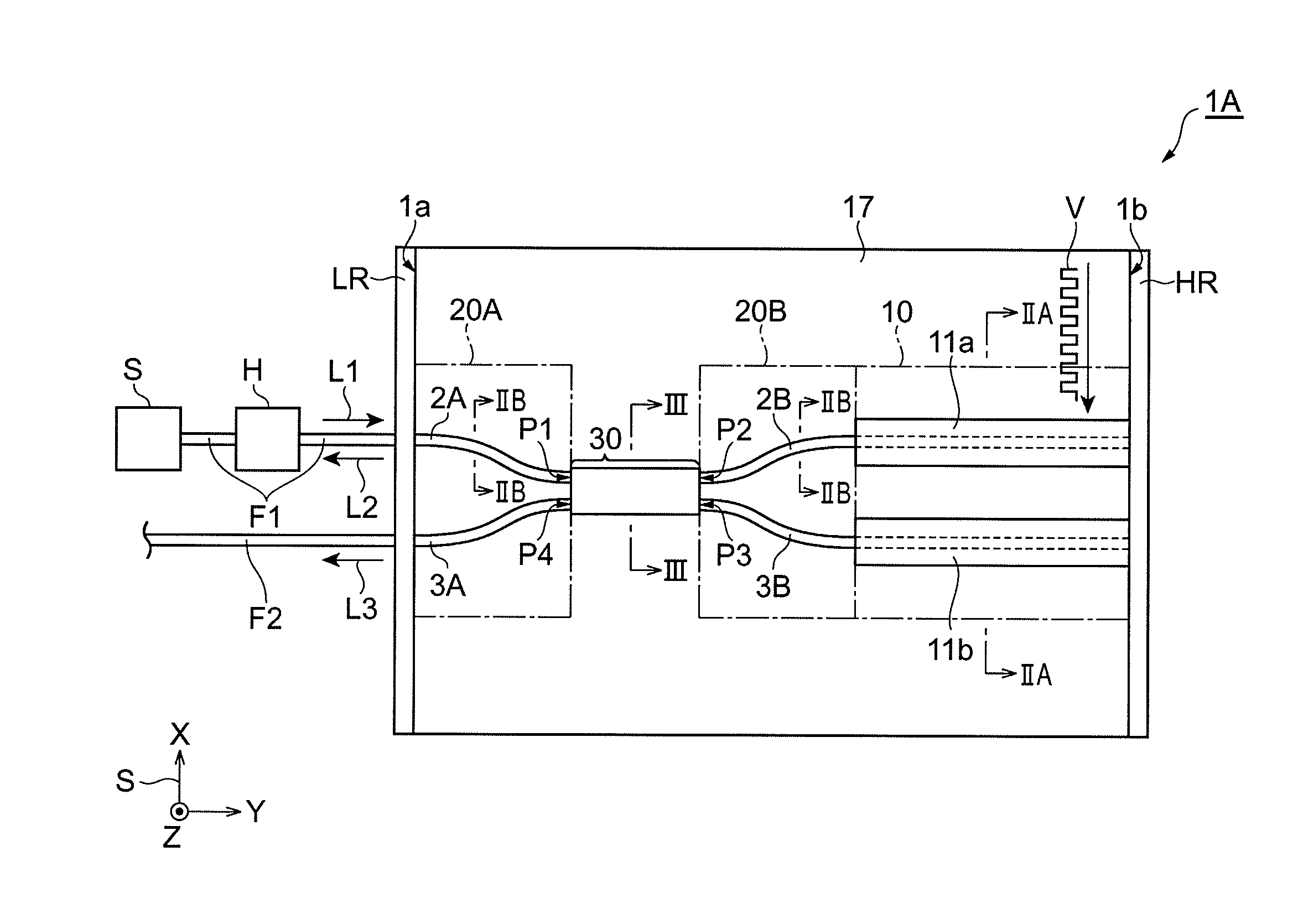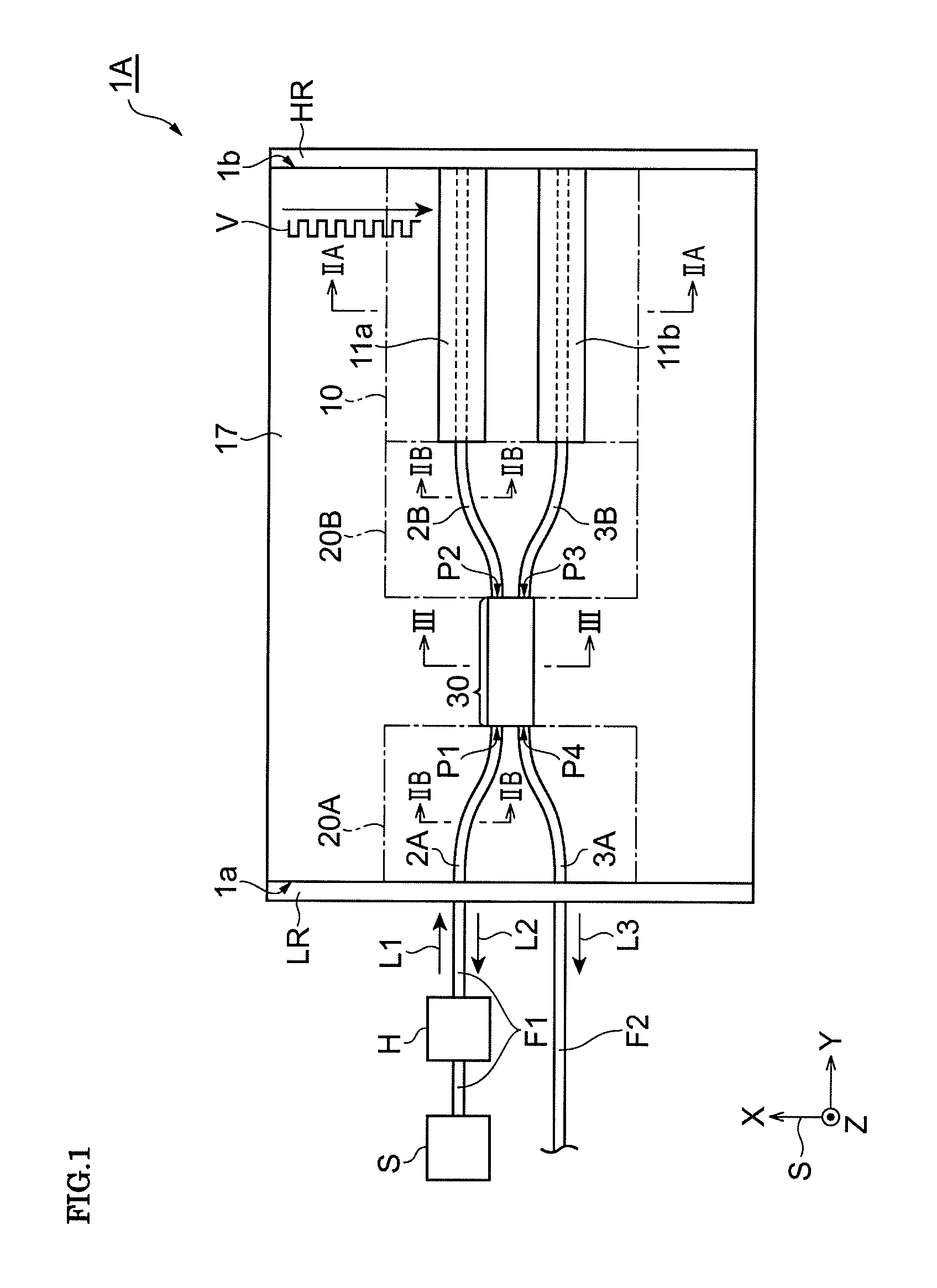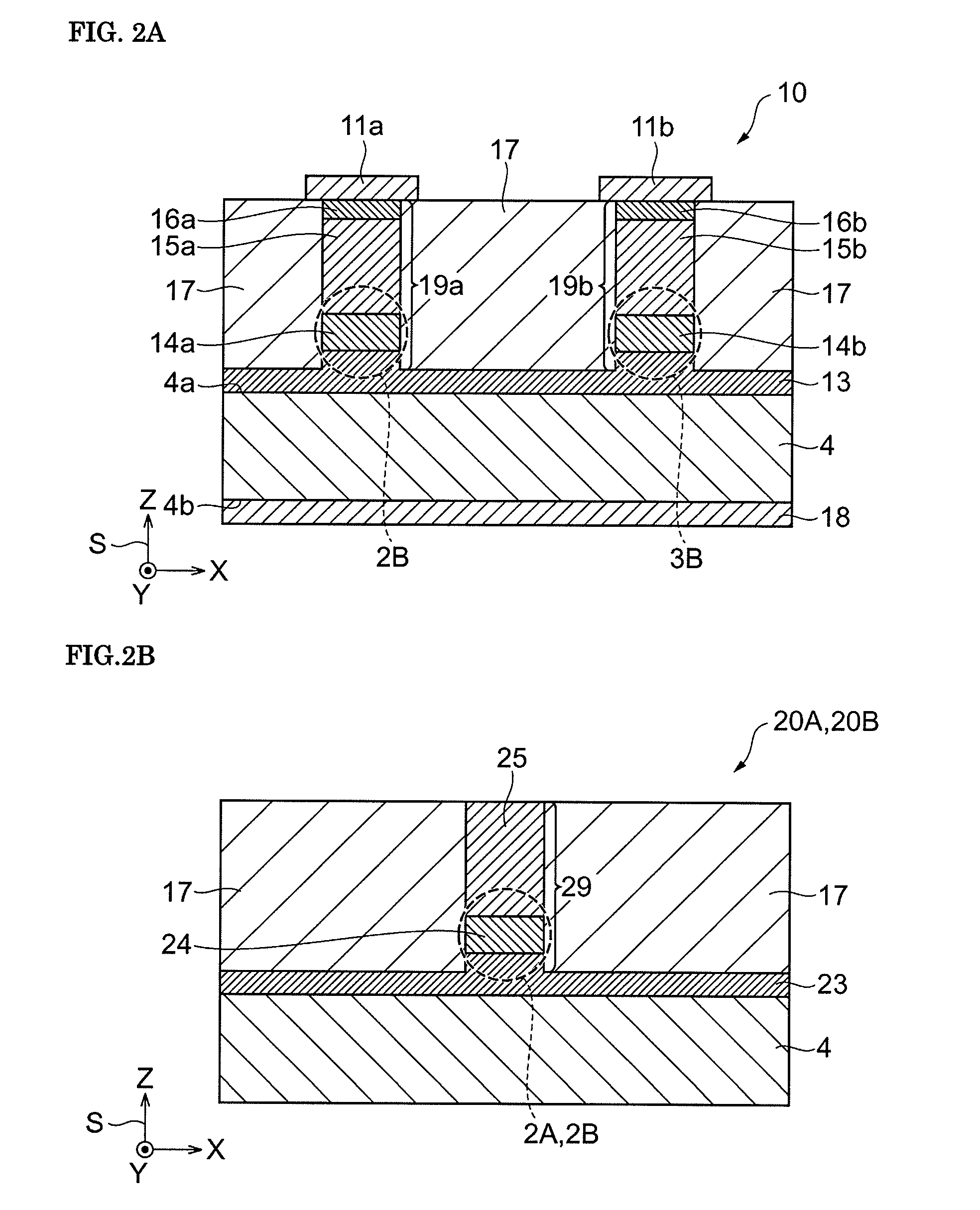Mach-zehnder interferometer type optical modulator
a technology of optical modulators and interferometers, applied in the field can solve the problems of difficult installation of mach-zehnder interferometer type optical modulators b>100, > in a small-size optical module, and achieve the effect of reducing the adverse effect of modulation operation and suppressing the degradation of optical coupling efficiency
- Summary
- Abstract
- Description
- Claims
- Application Information
AI Technical Summary
Benefits of technology
Problems solved by technology
Method used
Image
Examples
first embodiment
FIG. 1 is a plan view showing an example of a Mach-Zehnder interferometer type optical modulator. Referring to FIG. 1, a Mach-Zehnder interferometer type optical modulator 1A of this embodiment has a first end facet 1a that transmits light and a second end facet 1b that reflects light. The second end facet 1b is the reflecting portion of this embodiment. For example, a high-reflection film HR is formed on the second end facet 1b.
The Mach-Zehnder interferometer type optical modulator 1A of this embodiment includes a phase shifting section 10, waveguiding sections 20A and 20B, and an optical coupler 30. The optical coupler 30 is disposed between the waveguiding section 20A and the waveguiding section 20B. The waveguiding section 20B is disposed between the optical coupler 30 and the phase shifting section 10. The phase shifting section 10, the waveguiding sections 20A and 20B, and the optical coupler 30 are formed on an n-type semiconductor substrate 4 as shown in FIGS. 2A, 2B and 3....
modification example 1
Modification Example 1 of the Mach-Zehnder interferometer type optical modulator 1A described above will now be described. FIG. 4 is a plan view showing Modification Example 1 of a Mach-Zehnder interferometer type optical modulator.
A Mach-Zehnder interferometer type optical modulator 1B shown in FIG. 4 differs from the Mach-Zehnder interferometer type optical modulator 1A shown in FIG. 1 in that the Mach-Zehnder interferometer type optical modulator 1B has a predetermined gap between the phase shifting section 10 and the second end facet 1b. The phase shifting section 10 is disposed apart from the second end facet 1b by the predetermined gap. In other words, the Mach-Zehnder interferometer type optical modulator 1B includes a waveguiding section 20C between the phase shifting section 10 and the second end facet 1b. The waveguiding section 20C extends from the phase shifting section 10 to the second end facet 1b. The waveguiding section 20C includes two optical waveguide structures c...
modification example 2
Modification Example 2 of the Mach-Zehnder interferometer type optical modulator 1A described above will now be described. FIG. 5 is a plan view showing Modification Example 2 of a Mach-Zehnder interferometer type optical modulator. FIG. 6 is a cross-sectional view of the Mach-Zehnder interferometer type optical modulator shown in FIG. 5 taken along line VI-VI.
A Mach-Zehnder interferometer type optical modulator 1C shown in FIGS. 5 and 6 differs from the Mach-Zehnder interferometer type optical modulator 1A shown in FIG. 1 in that a semi-insulating substrate is used as the semiconductor substrate. Accordingly, the structure of a phase shifting section 110 of the Mach-Zehnder interferometer type optical modulator 1C differs from the structure of the phase shifting section 10 of the Mach-Zehnder interferometer type optical modulator 1A.
According to Modification Example 2, an Fe-doped InP substrate may be used as a semi-insulating semiconductor substrate 44. In this case, the lower ele...
PUM
| Property | Measurement | Unit |
|---|---|---|
| length | aaaaa | aaaaa |
| reflectivity | aaaaa | aaaaa |
| reflectivity | aaaaa | aaaaa |
Abstract
Description
Claims
Application Information
 Login to View More
Login to View More - R&D
- Intellectual Property
- Life Sciences
- Materials
- Tech Scout
- Unparalleled Data Quality
- Higher Quality Content
- 60% Fewer Hallucinations
Browse by: Latest US Patents, China's latest patents, Technical Efficacy Thesaurus, Application Domain, Technology Topic, Popular Technical Reports.
© 2025 PatSnap. All rights reserved.Legal|Privacy policy|Modern Slavery Act Transparency Statement|Sitemap|About US| Contact US: help@patsnap.com



